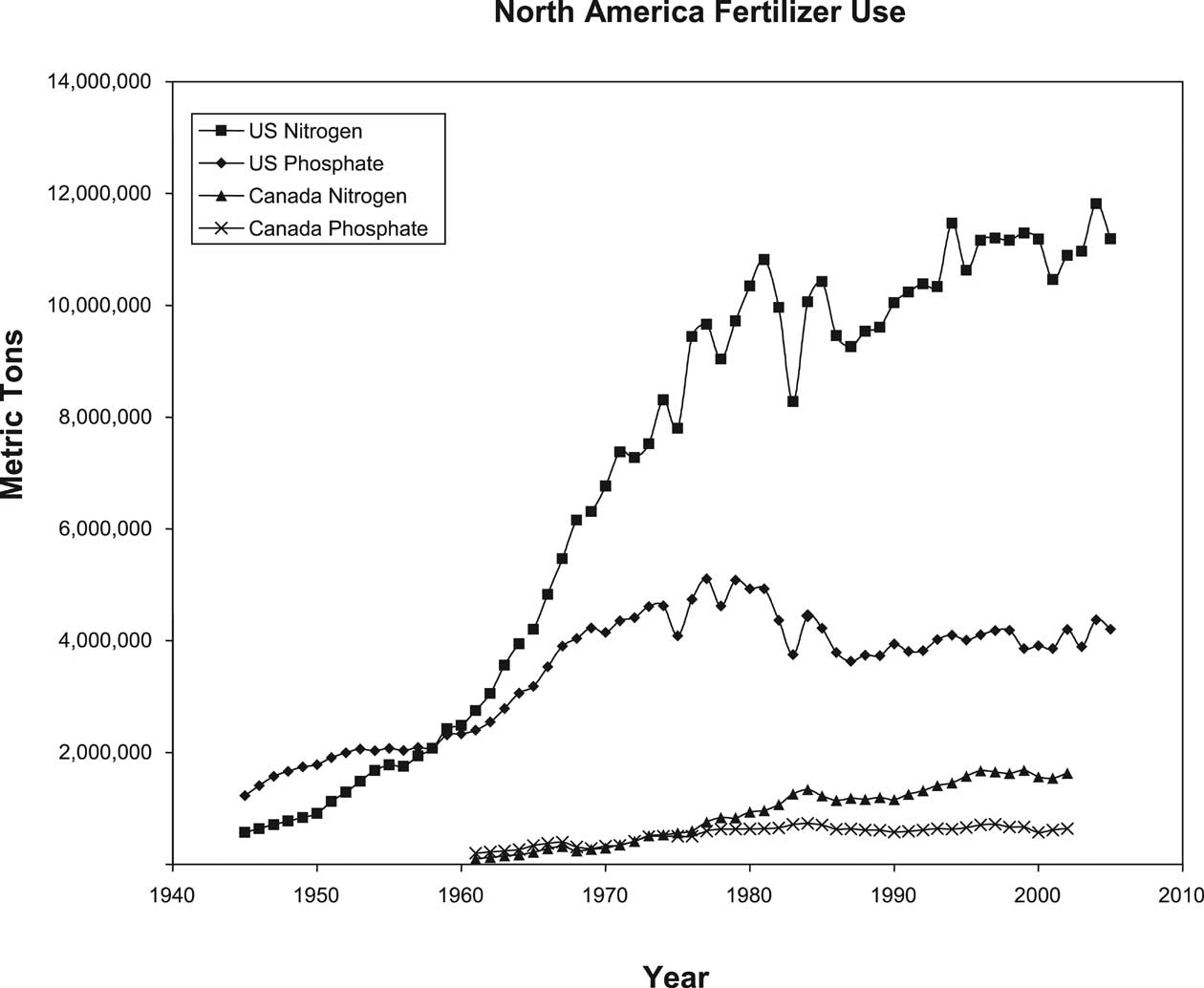
| Previous | Return to table of contents | Search Reports | Next |
| « Back to weltagrarbericht.de | ||
44 | North America and Europe (NAE) Report
creased from 7.3 to 55.9 kg/ha per year (Goskonstat, 1975) but there was a significant temporary decrease in fertilizer use in the CEE and CIS countries in the late 1980s due to the collapse of the former Soviet Union. While P use leveled off in North America around 1980, N use is still increasing, though at a slower rate than pre-1980 (Figures 2-11 and 2-12). Fertilizer use in the intensive cropping systems of the NAE is partly responsible for the considerable gains in agricultural productivity in NAE since the 1950s. Until recently, fertilizer has been relatively cheap for farmers and the profits from yield increases achieved far exceeded the costs of the additional fertilizers. 2.4.3.4 Pesticide usage in NAE cropping systems Synthetic chemical pesticides were developed and introduced after 1945 and have since become the major form of pest management in agriculture and stored products in NAE. The term pesticide refers to herbicides, insecticides and fungicides, as well as products that control rodents, nematodes and other pests and treat or preserve timber. Over 1000 chemicals are marketed worldwide, sold in tens of thousands of formulations (Tomlin, 2006). |
|
gressively increased to address environmental and health concerns. The organochlorine pesticides which represented the first generation of insecticides were bioaccumulative and environmentally persistent. This led to a series of bans and withdrawals in NAE and worldwide. In 1960, chlorinated pesticides had represented about 75% of insecticide use in the US, but by 1997 these were less than 3% (see Aspelin, 2003). Nine of these insecticides are now scheduled to be withdrawn from production and use under the Stockholm Convention on Persistent Organic Pollutants. Since 1992, discussions have taken place to globally harmonize the classification and labeling requirements for pesticides worldwide (OECD, 2004). |

Figure 2-11. Fertilizer use in North America. Sources: U.S. data: USDA-ERS; Canada: FAO statistics.
| Previous | Return to table of contents | Search Reports | Next |
| « Back to weltagrarbericht.de | ||